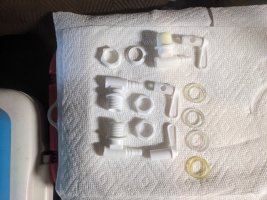Hey everyone!
I brewed a hefe around 10 days ago and it was in the fermenter until now, got ready to keg it and saw this. I first checked the gravity without opening the bucket and it was a 1.06, then tasted it and it tasted ok, like a hefe but had some chunks floating in it. When I opened the bucket, I saw the white stuff on top, not sure if it's mold and if beer is drinkable?
Edit: It does look like Kahm yeast.
I brewed a hefe around 10 days ago and it was in the fermenter until now, got ready to keg it and saw this. I first checked the gravity without opening the bucket and it was a 1.06, then tasted it and it tasted ok, like a hefe but had some chunks floating in it. When I opened the bucket, I saw the white stuff on top, not sure if it's mold and if beer is drinkable?
Edit: It does look like Kahm yeast.
Last edited:













































![Craft A Brew - Safale S-04 Dry Yeast - Fermentis - English Ale Dry Yeast - For English and American Ales and Hard Apple Ciders - Ingredients for Home Brewing - Beer Making Supplies - [1 Pack]](https://m.media-amazon.com/images/I/41fVGNh6JfL._SL500_.jpg)












